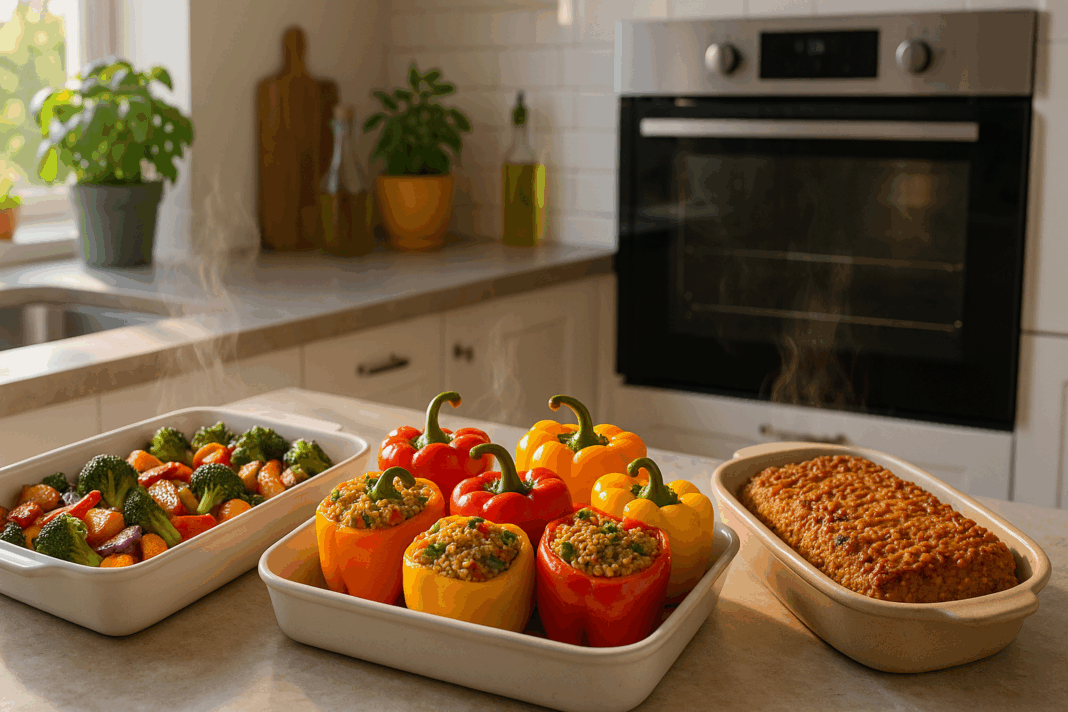Why Oven Cooking Is the Healthier (and Smarter) Way to Eat
Oven-baked meals have long been cherished for their convenience, but they’re now gaining recognition as a gold standard for healthier home cooking. Unlike frying or deep sautéing, oven baking relies on dry heat, allowing food to retain its natural moisture and nutrients while requiring less oil or fat. As more people turn to whole-food, plant-based diets and aim to reduce processed ingredients, the demand for healthy oven dishes has surged—and for good reason. Baking offers a method that’s not only flavorful and satisfying but also inherently supportive of long-term wellness.
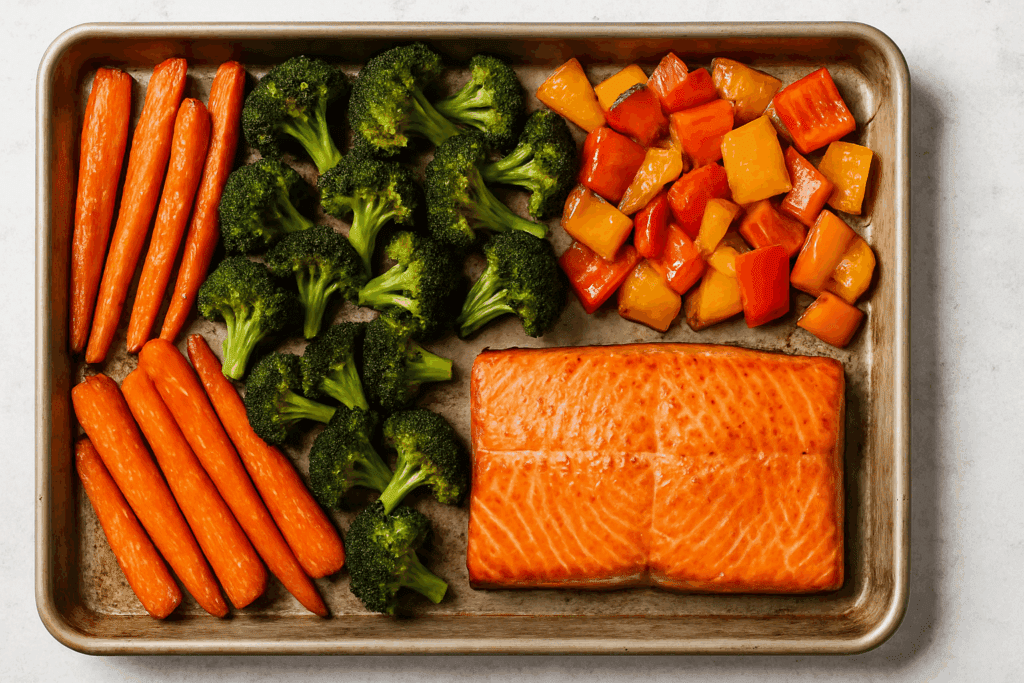
What makes the oven so ideal for nutritious meal preparation is its ability to balance flavor and health in every bite. Roasting vegetables caramelizes their natural sugars, enhancing taste without the need for heavy sauces or added salt. Lean proteins cook evenly, grains become hearty and textured, and even desserts can be reinvented in wholesome ways. With just a few tweaks, traditional favorites can be turned into healthy recipes in oven formats that serve both your taste buds and your body. For those navigating busy schedules or simply looking to make smarter dietary choices, oven cooking delivers efficiency without compromise.
You may also like: Smart, Simple Recipes for a Balanced Diet: Expert-Backed Healthy Food Dishes to Support Everyday Wellness
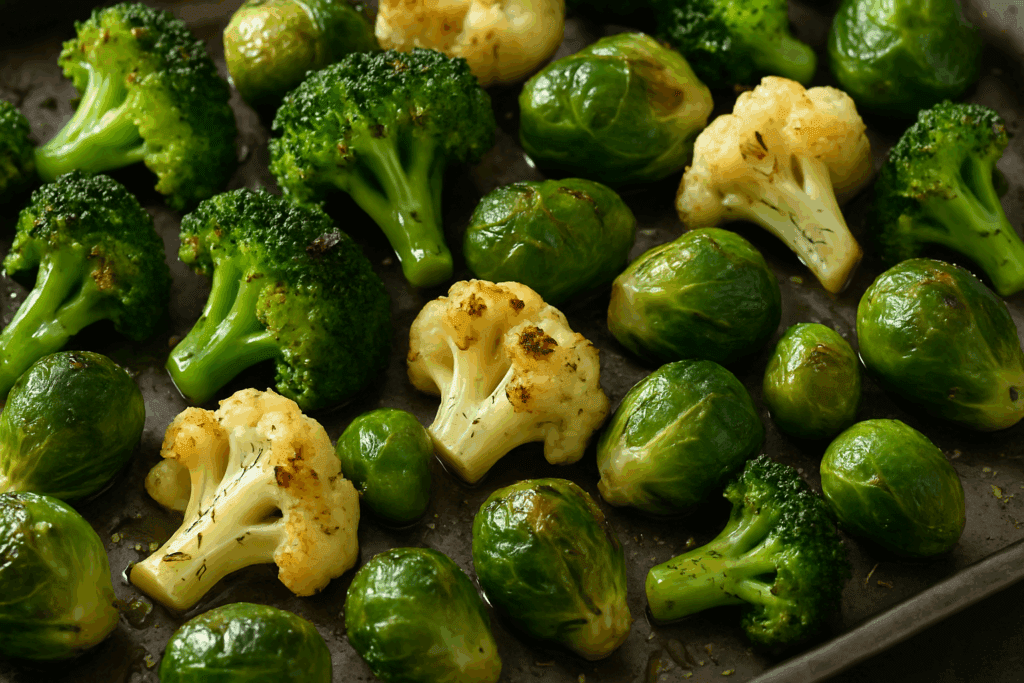
The Nutritional Advantages of Baking Your Meals
The health benefits of oven cooking go far beyond calorie control. By minimizing the need for oils and preserving the integrity of whole ingredients, baking allows for greater nutrient retention and a cleaner, more balanced meal profile. For instance, roasting cruciferous vegetables like Brussels sprouts, broccoli, and cauliflower enhances their antioxidant properties without stripping them of fiber or essential vitamins. This contrasts with boiling, where valuable nutrients often leach into the water and are lost during cooking.
Healthy baked dinner ideas also typically focus on whole grains, legumes, and lean proteins, which form the backbone of anti-inflammatory diets. Oven-baked quinoa-stuffed peppers or lentil loaf with sweet potato crust are both hearty and nutritionally dense, offering plant-based protein, complex carbohydrates, and essential minerals like iron and magnesium. These meals help stabilize blood sugar, improve digestion, and support cardiovascular health.
Another advantage is portion control. Baking lends itself to structured meal prep, enabling better management of macros and serving sizes. Casseroles, sheet pan dinners, and baked grain bowls are easy to divide into individual servings, making it less likely to overeat. This structured approach also aligns well with mindful eating practices, helping individuals stay more aware of hunger cues and food choices. As such, integrating healthy oven dishes into your weekly meal plan can be an effective strategy for maintaining energy, reducing cravings, and supporting long-term weight goals.
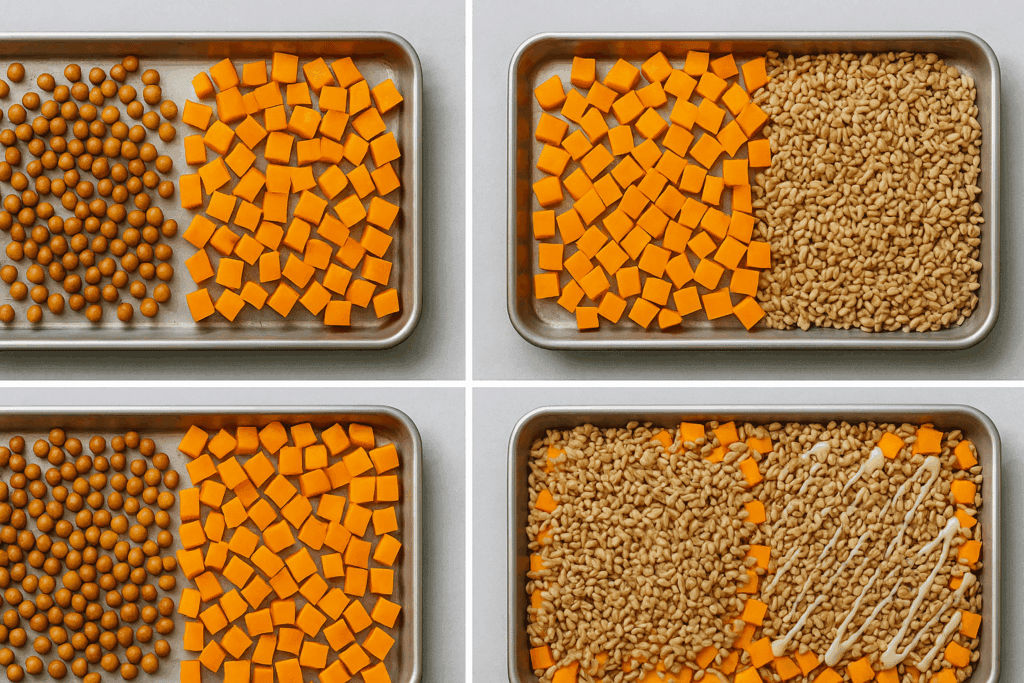
Building Healthy Recipes in Oven-Style Meals
Crafting nutritious baked meals doesn’t require culinary expertise—it simply takes thoughtful ingredient pairing and strategic preparation. A balanced oven dish usually includes three key components: a nutrient-dense carbohydrate, a lean protein source, and plenty of colorful, fiber-rich vegetables. Consider a tray of roasted chickpeas and butternut squash served with farro and tahini drizzle. This combination offers protein, fiber, healthy fats, and anti-inflammatory compounds in one easy-to-prep meal.
Start by layering ingredients with staggered cooking times. Denser vegetables like sweet potatoes and carrots should go in first, followed by lighter ingredients like zucchini or bell peppers. Proteins like marinated tofu or salmon can be added mid-way to prevent overcooking. When developing healthy baked dinner ideas, the oven becomes a tool for harmony—coaxing textures and flavors to meld together in each tray.
Incorporating herbs and spices also elevates oven meals while adding health benefits. Cumin, turmeric, garlic, and rosemary have antimicrobial and anti-inflammatory properties that boost your immune system. And when you use citrus zest, vinegars, or low-sodium broths instead of heavy sauces, you retain brightness and flavor without added calories. These tweaks transform basic recipes into flavorful, nutrient-rich meals you’ll look forward to eating.
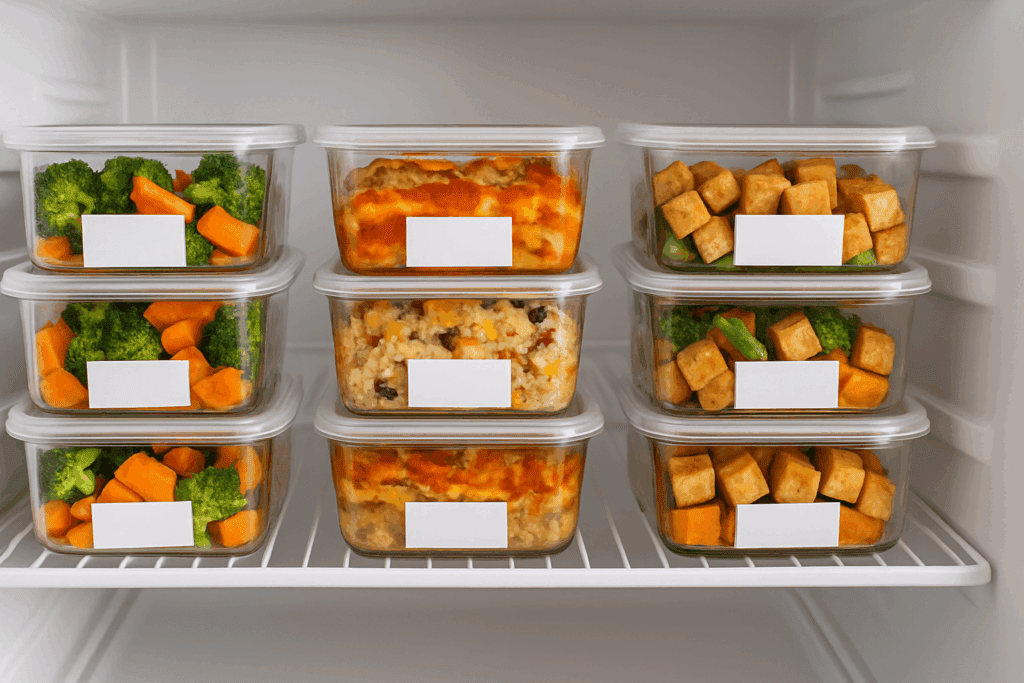
Batch Cooking and Meal Prep with the Oven
One of the biggest advantages of baking is its compatibility with batch cooking and weekly meal prep. Preparing several oven dishes at once saves time and ensures you have healthy meals ready when life gets busy. Dishes like baked tofu bowls, roasted vegetable medleys, and grain-based casseroles can be refrigerated or frozen in single-serving portions, making it easier to stay on track with your nutritional goals throughout the week.
Batch baking also promotes consistency. When you’ve already prepared a variety of healthy oven dishes, you’re less likely to reach for ultra-processed convenience foods. Having balanced, ready-to-eat meals available supports mindful choices and reduces stress around mealtimes. Whether you’re reheating a lentil-stuffed eggplant or enjoying baked falafel over greens, having nourishing options on hand helps maintain a steady rhythm of wellness.
Oven cooking simplifies meal prep logistics, too. You can use one baking sheet to cook three or four different ingredients at once—like roasting broccoli, potatoes, and tempeh in sections. This not only streamlines cleanup but also maximizes your oven’s efficiency, reducing energy use and kitchen clutter. For anyone managing dietary restrictions or family preferences, baking also allows for easy customization by arranging ingredients on separate sides of the pan or adjusting seasonings post-cook.

Family-Friendly and Kid-Approved Oven Meals
Healthy eating becomes more sustainable when the whole family is involved, and oven meals are often crowd-pleasers. Even picky eaters can find comfort in the textures and flavors that baking produces. Oven-roasted carrots, zucchini fries, or baked spaghetti squash with marinara sauce offer familiar tastes in healthier forms. Turning traditional favorites into healthy recipes in oven styles can be as simple as using whole-grain pasta, plant-based cheese, and vegetable-forward sauces.
Kids especially love meals they can help prepare. Allowing children to select their toppings for baked pita pizzas or help layer ingredients in a veggie lasagna can encourage curiosity and reduce resistance to trying new foods. These shared experiences also reinforce positive associations with cooking and eating nutritious meals. And when meals come out of the oven with a warm aroma and golden crust, they tend to disappear faster—regardless of age.
Family oven meals also foster togetherness. Sitting down to a dinner of oven-baked enchiladas, veggie-stuffed bell peppers, or a quinoa casserole invites conversation and mindfulness. Studies have shown that families who cook and eat together are more likely to maintain healthy weights, enjoy better mental health, and build stronger interpersonal bonds. Oven cooking supports this by simplifying the process and encouraging a wholesome, communal dining experience.
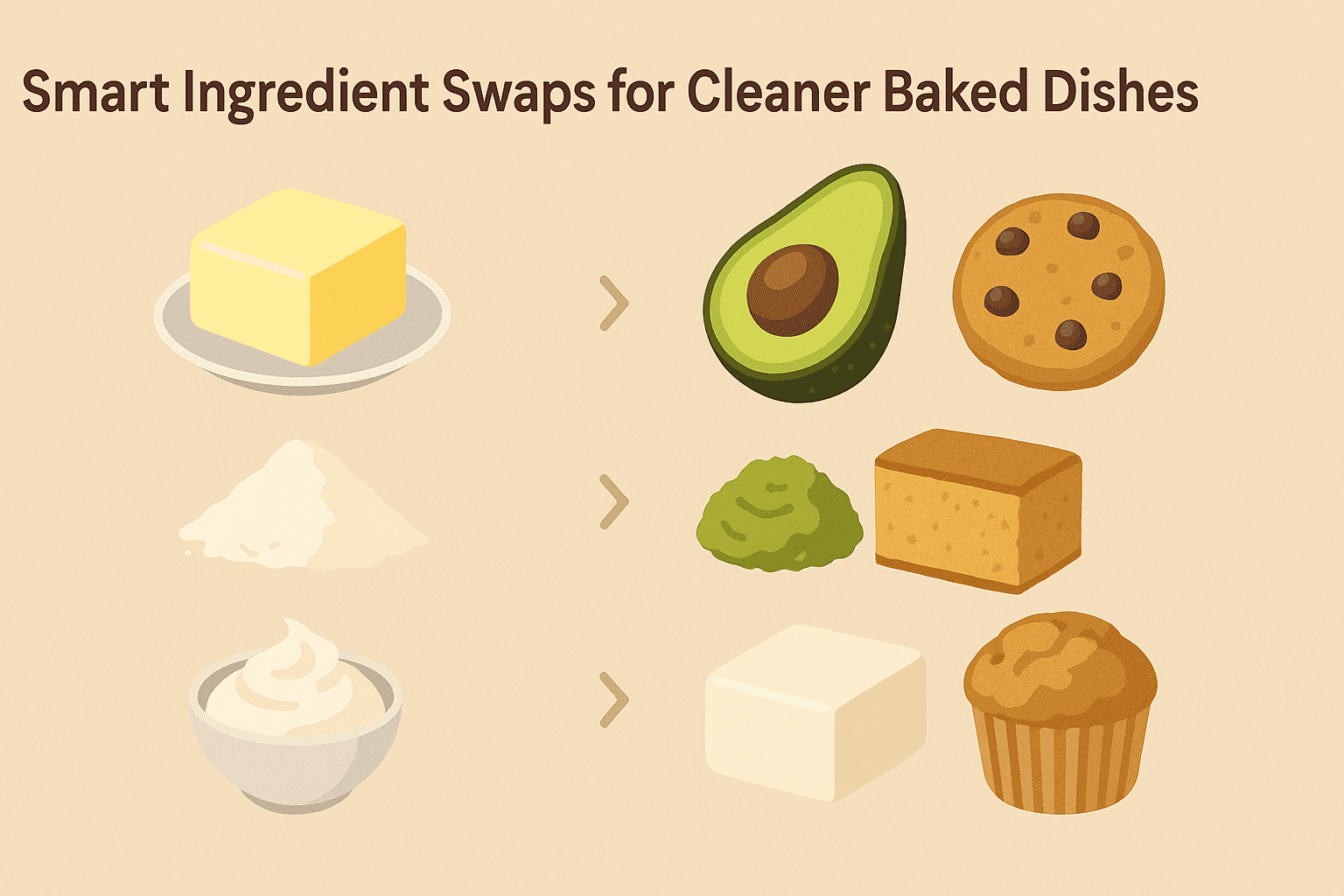
Smart Ingredient Swaps for Cleaner Baked Dishes
Adapting traditional comfort foods into healthy oven dishes doesn’t mean sacrificing flavor. By making simple ingredient swaps, you can retain the heart of a recipe while upgrading its nutritional profile. Replace white flour with almond or oat flour in breaded items. Choose low-fat yogurt or silken tofu in place of cream or cheese-based sauces. Use mashed beans or avocado as a moisture-rich substitute for butter in baked casseroles and savory pies.
Meat-based recipes can also be reimagined with plant proteins. Baked black bean enchiladas, lentil loaf, or stuffed mushrooms with quinoa and nuts are filling and satisfying, without the saturated fats often found in red meat. If dairy is a staple in your cooking, opt for plant-based cheeses with minimal additives or use nutritional yeast for a savory boost.
For those aiming to reduce sodium, seasoning blends and acid-forward ingredients like lemon juice or apple cider vinegar offer a flavorful alternative to salt. Baking also enhances the natural sweetness in foods, reducing the need for added sugar. Sweet potatoes, beets, and tomatoes become richer in flavor as they caramelize, making them excellent additions to healthy baked dinner ideas that taste indulgent but support your health goals.
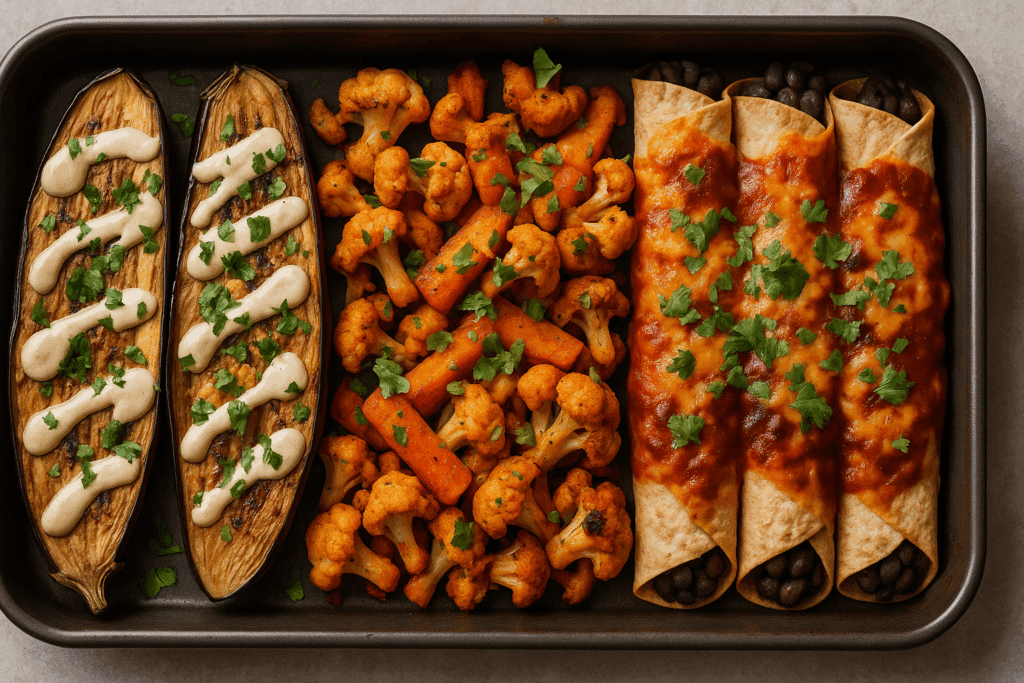
Global Inspiration for Healthy Baked Dinner Ideas
One of the most enjoyable ways to keep healthy eating exciting is to draw from global cuisines that emphasize oven-based dishes. Mediterranean cooking, for example, is naturally rich in healthy recipes in oven styles—think baked eggplant with tahini, roasted chickpeas with za’atar, or lemon herb fish with roasted fennel. These meals are rich in fiber, omega-3s, and phytonutrients while being low in processed ingredients.
From the Middle East, you might draw inspiration from baked falafel served over quinoa tabbouleh, or Persian-style roasted cauliflower with turmeric and sumac. In Indian cuisine, spiced tandoori vegetables or baked samosa-stuffed peppers offer bold flavors without deep frying. Latin American dishes like oven-baked black bean tacos or enchiladas verde bring color and zest with plenty of fiber and antioxidants.
These international twists make it easier to stick with healthy eating long-term. By rotating cuisines each week, you avoid monotony and expose yourself to a wider range of beneficial herbs, spices, and plant foods. The beauty of oven-based meals is that they’re endlessly adaptable—you can experiment with new ingredients while staying grounded in nutrient-dense, whole-food cooking.
Frequently Asked Questions: Expert Insights on Healthy Oven Dishes and Baked Meals
1. How can I make healthy oven dishes more exciting for someone used to richer, fried foods?
Transforming taste preferences takes time, but it starts with bold flavor combinations and creative textures. Healthy oven dishes can be made more exciting by experimenting with spice blends, fresh herbs, citrus zest, and slow-roasting techniques that deepen natural flavors. For example, try roasting cauliflower with smoked paprika and a squeeze of lime, or baking sweet potato wedges tossed in cinnamon and cumin. These seasonings elevate healthy recipes in oven cooking beyond bland or diet-associated meals. Over time, your palate begins to favor these cleaner flavors, especially when paired with visually vibrant, well-balanced plates.
2. What are the best strategies for reheating healthy baked dinner ideas without drying them out?
The key to reheating healthy baked dinner ideas while preserving moisture is to use low, gentle heat and a splash of added liquid. Oven reheating at 300–325°F with foil coverage helps retain texture and flavor. For items like quinoa casseroles or baked tofu, adding a tablespoon of broth or plant-based milk prevents drying. Avoid the microwave for delicate items like roasted vegetables, as it can alter texture and flavor. These strategies maintain the integrity of healthy recipes in oven form, especially when prepping meals in batches.
3. How can I adapt healthy recipes in oven form for someone with gluten intolerance?
There are countless ways to adapt healthy oven dishes for gluten-free diets without sacrificing taste or nutrition. Swap traditional breadcrumbs with almond flour, crushed nuts, or certified gluten-free oats when baking patties or casseroles. Use naturally gluten-free grains like quinoa, millet, or buckwheat as the base of baked meals. Even lasagnas can be made with zucchini ribbons or gluten-free noodles. These creative adaptations ensure that gluten-sensitive individuals can still enjoy diverse and satisfying healthy baked dinner ideas regularly.
4. What are some emerging trends in healthy baked meals that nutritionists are recommending?
One emerging trend is incorporating prebiotic-rich ingredients—like Jerusalem artichokes and leeks—into healthy baked dinner ideas to support gut health. Another involves using fermented condiments, such as miso or kimchi brine, as glazes or marinades to add umami depth while enhancing probiotic benefits. Additionally, dietitians are increasingly recommending sheet pan meals that combine plant-based proteins with seasonal produce and whole grains for nutritional diversity. These fresh applications demonstrate how healthy recipes in oven preparation can evolve with the latest in functional nutrition science.
5. How do healthy oven dishes support long-term weight management better than other meal types?
Healthy oven dishes promote satiety by emphasizing fiber-rich vegetables, complex carbohydrates, and lean proteins—all of which help regulate blood sugar and curb overeating. Since oven meals often involve whole ingredients with minimal processing, they naturally reduce hidden sugars and fats. Compared to frying, baking eliminates excess oil absorption, reducing caloric density without shrinking portion size. This allows individuals to feel full and satisfied on fewer calories. When used consistently, healthy recipes in oven meals align with weight-loss goals without fostering deprivation or rebound eating behaviors.
6. Can I use air fryers as an alternative to traditional ovens for healthy baked dinner ideas?
While air fryers mimic some oven functions, they don’t replace the full capabilities of traditional baking. Air fryers excel at creating crispy textures with less oil, but their compact size limits batch cooking and complex layering. For large-scale healthy oven dishes—like casseroles or stuffed vegetables—traditional ovens offer superior results in flavor development and even cooking. However, air fryers are useful tools for quickly preparing components of healthy recipes in oven-style formats, such as crispy tofu or roasted chickpeas, especially for individuals cooking for one.
7. How do cultural food traditions influence the evolution of healthy recipes in oven cooking?
Many traditional cuisines have long embraced baking and roasting as core methods of nourishment. Mediterranean diets, for instance, highlight oven-roasted vegetables with olive oil and herbs, while Indian cuisine features tandoor-style baking of marinated proteins. Adapting these traditions into modern healthy baked dinner ideas allows for the preservation of cultural identity while aligning with today’s health standards. Oven dishes like shakshuka, ratatouille, or baked samosas showcase how cultural heritage and contemporary wellness can coexist on the same plate.
8. What psychological benefits come from regularly preparing healthy recipes in oven form?
The act of baking creates structure and routine, both of which support emotional stability and mindfulness. Preparing healthy recipes in oven format encourages a slower, more intentional cooking rhythm—fostering stress relief and present-moment focus. The aroma of food baking also stimulates appetite in a soothing, sensory way that microwave meals or takeout often fail to match. Additionally, the creative process involved in developing healthy oven dishes can boost confidence and self-efficacy, contributing to healthier eating behaviors over time.
9. What overlooked ingredients work especially well in healthy baked dinner ideas?
Lesser-known but highly nutritious ingredients like kohlrabi, fennel bulbs, and celery root caramelize beautifully when baked and bring unique textures to the table. Other standout additions include adzuki beans, which hold their shape in baked casseroles, and farro, which adds chewiness and nutty flavor to vegetable bakes. These ingredients elevate healthy oven dishes from predictable to gourmet, all while enhancing fiber, mineral, and phytonutrient intake. Including these elements in your weekly meals helps diversify your nutrient portfolio and expand your palate beyond the basics.
10. How might the future of healthy recipes in oven development evolve with food technology?
As precision ovens and smart kitchen tools gain popularity, healthy recipes in oven cooking are likely to become more interactive and customizable. New technologies allow users to control humidity, air flow, and multi-zone cooking in ways that maximize both flavor and nutrition. Expect an uptick in recipes that cater to specific health goals—such as hormone balance, anti-inflammatory diets, or cognitive support—delivered via AI-enhanced baking apps. This convergence of wellness and smart tech may revolutionize how we prepare healthy oven dishes at home, making health-centered eating more efficient, personalized, and enjoyable.
Conclusion: A Nourishing Path to Better Living Starts with the Oven
Healthy eating doesn’t have to be complex, expensive, or time-consuming. With the right strategies, your oven becomes a powerful ally in crafting meals that are not only good for you but deeply satisfying to eat. From crispy roasted vegetables to tender baked grain bowls, healthy oven dishes combine convenience, flavor, and wellness in a way that few other methods can match.
By prioritizing whole ingredients and experimenting with global flavors, you can turn everyday dinners into moments of nourishment and joy. The key lies in balance—using smart substitutions, embracing mindful preparation, and finding meals that your household genuinely enjoys. Whether you’re preparing meals for one or feeding a family, baked meals simplify the path to better health and make mindful eating more accessible.
Let healthy baked dinner ideas become a regular part of your meal planning. Your taste buds will thank you, and so will your body. In a world that often pushes quick fixes and convenience foods, taking the time to cook nourishing meals in your oven is an act of self-care, resilience, and long-term wellness. Start today with a sheet pan of rainbow vegetables or a quinoa-stuffed pepper—and savor the knowledge that you’re feeding more than just your hunger. You’re feeding your future.
Was this article helpful? Don’t let it stop with you. Share it right now with someone who needs to see it—whether it’s a friend, a colleague, or your whole network. And if staying ahead on this topic matters to you, subscribe to this publication for the most up-to-date information. You’ll get the latest insights delivered straight to you—no searching, no missing out.
oven-baked meals, nutritious dinner ideas, healthy home cooking, easy meal prep recipes, plant-based dinners, low-fat cooking techniques, baked vegetable recipes, clean eating meals, high-fiber dinner ideas, family-friendly healthy meals, anti-inflammatory foods, one-pan dinners, heart-healthy cooking, oven roasted vegetables, whole food recipes, dietitian-approved meals, balanced meal planning, healthy lifestyle dinners, batch cooking tips, mindful eating strategies
Further Reading:
80 Easy Dinner Recipes You Can Just Throw in the Oven
29 Healthy Easy Meals You Can Make in 10 Minutes or Less
30 Delicious and Healthy Dinner Ideas for Two
Disclaimer
The information contained in this article is provided for general informational purposes only and is not intended to serve as medical, legal, or professional advice. While NewsHealthWatch strives to present accurate, up-to-date, and reliable content, no warranty or guarantee, expressed or implied, is made regarding the completeness, accuracy, or adequacy of the information provided. Readers are strongly advised to seek the guidance of a qualified healthcare provider or other relevant professionals before acting on any information contained in this article. NewsHealthWatch, its authors, editors, and contributors expressly disclaim any liability for any damages, losses, or consequences arising directly or indirectly from the use, interpretation, or reliance on any information presented herein. The views and opinions expressed in this article are those of the author(s) and do not necessarily reflect the official policies or positions of NewsHealthWatch.

